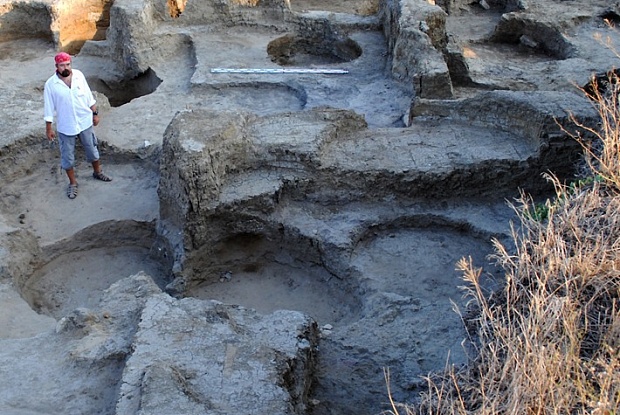“[The stele] is, without exaggeration, a discovery of international significance” – Vladmir Kuznetsov, director of Phanagoria Historical and Archaeological Museum-Preserve at the Institute of Archaeology of the Russian Academy of Sciences.

Remains of Phanagoria’s ancient walls [PHOTO: theartnewspaper.com]
Darius the Great was one of the greatest rulers of the Achaemenid dynasty in Persia. He tried several times to conquer Greece, especially after several Greek city states sponsored the revolt of a small country under Persian control called Ionia. The Persians managed to crush the Ionian revolt, and afterward Darius I set his sights on Greece, angry that the Greek city-states had been audacious enough to stand against his empire, and invaded.
![Relief of Darius I [PHOTO: wikimedia]](https://historythings.com/wp-content/uploads/2016/08/Darius_In_Parse.jpg)
Relief of Darius I [PHOTO: wikimedia]
So why is this particular stele so important? Well, the archaeologists have been working on translating the ancient cuneiform the tablet’s written in. About 15-20% of the writing on the tablet is still readable. From the pieces they’ve been able to translate, they’ve discovered that the message was made on the behalf of King Darius, not by Darius I himself, and was written just after the time of the Ionian revolt.
The most exciting part about the inscription boils down to a single word. The inscription contains the Greek word, “Miletus”.
“Miletus” was the name of the Greek city in Ionia that was the leader of the Ionian revolt against Persia. The archaeologists and translators working on the site believe this is compelling evidence that the stele was written about the Ionian revolt. The theory is that Darius I commissioned the stele to be written about his victory over Ionia. It was later shipped to Phangoria, linking the Greek city to one of the most important moments in European history ever.
“[The stele] makes it possible to trace the connections of this colony with other parts of the Greek world and analyze its significance in advancing Hellenistic civilization on the Black Sea coast,” Vladmir Kuznetsov said. It’s unclear just how much more we’ll be able to learn about Phangoria’s relationship with the other Greek city-states from this particular stele, but time will tell.
It’s clear that, at the time the stele was written and shipped to Phangoria, the city was under the direct thumb of the Persian Empire. Perhaps Darius sent it as a warning of what would happen to anyone who would dare stand against the might of his kingdom. Perhaps he was hoping that the stele would scare Phangoria into submission.
Archaeologists are continuing to work on the ruins of Phangoria. The city dates back to the end of the 6th century BC, and was destroyed no later than the middle of fifth century BC. They have high hopes for the site’s future contributions to the ancient history of the Black Sea region.
“[Phangoria] can become a phenomenon in classical archaeology for the entire Mediterranean and Black Sea region.” – Vladmir Kuznetsov.

